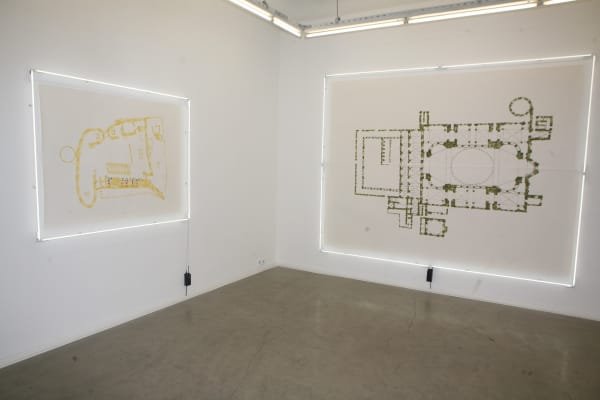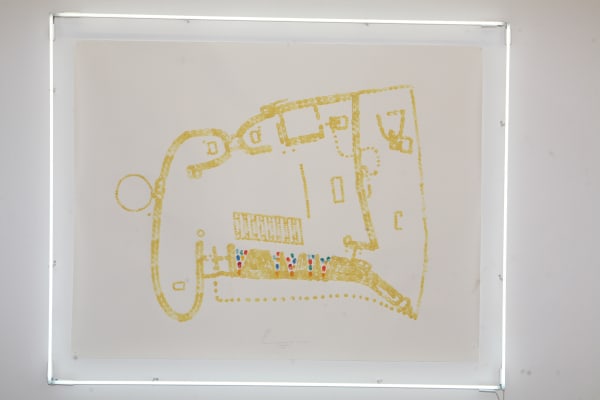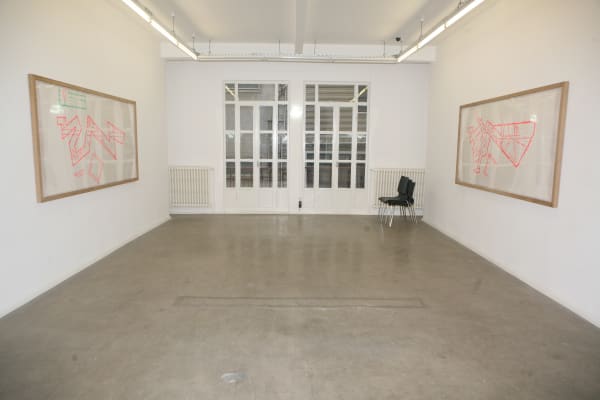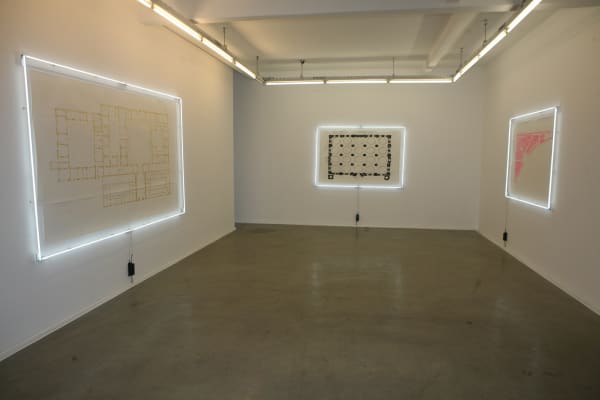Opus: Sarkis
Galerist is proud to present the most recent works by Sarkis, one of the most influential and leading Turkish contemporary artists. His new solo show, OPUS, can be seen at Galerist / Galatasaray from March 5th to April 10th, 2010.
The exhibition is composed of a range of works by the artist that includes the architectural plans and his neon writings, created for the occasion, to be displayed for the first time.
Concerned with the spaces, Sarkis asks continuous questions to architectural sites and art venues. By communicating with the smallest details inside the venue and by subjecting the energy of the location to constant change, the artist aims to project the viewers’ energy in the architectural spaces together with his own.
In his recent exhibitions in Istanbul, the viewers have witnessed the relationship the artist forms with his spaces and how they are subject to intervention. ‘A Milestone’ exhibition at Akbank Sanat; his last exhibition ‘Site’ at Istanbul Modern Museum and finally the gold leafed construction at Mimar Sinan’s, Atik Valide Mosque Complex (Üsküdar, Istanbul) can all be considered as multidimensional relationship that Sarkis forms with spaces.
In OPUS, Sarkis deals with a gallery space and shares his interpretations of architectural plans, depicted with water color on paper by the artist’s fingerprints. The exhibition also features neon installations specifically designed for the venue. The neon writings on the walls of the gallery and the white neon framings of the architectural plans work together to illuminate the exhibition space.
Architectural patterns derived from floor plans complemented by fingerprints are the characteristic of the artist’s style. Just as in Sarkis’ work on paper with watercolors, we see his handprints on his plans. The architectural interpretations in Opus plans which revive the matter of signature questioned in his previous work carrying traces of the artist’s identity.
In his “interpretation”s of architectural plans, Sarkis extends his architectural range starting with Mimar Sinan, who has a significant influence on his work. The artist also includes renowned works of Sinan ranging from the Selimiye Mosque to the Atik Valide Mosque Complex as well as distinguished examples of Ottoman Architecture such as Hagia Sophia, Rumeli Fortress and Ulu Mosque.
In the exhibition, while reinterpreting Ryoan-jiTemple in Japan and the AjantaCaves in India, Sarkis brings together works by some of the most important figures of modern architecture such as the Cathedral of Le Corbusier in Ronchamp, Libeskind’s Jewish Museum in Berlin and Parliament Social Complex in Bangladesh by Louis Khan.
Discussion Session with Sarkis
Sarkis is meeting with his visitors at Galerist on March the 6th, Saturday at 15.00. Dr. Aykut Köksal will also be present at this session which is open to all art lovers. The visitors will have the change to discuss the exhibition and the architectural plans.
About the Artist
Born in Istanbul in 1938, Sarkis is one of the leading actors of Turkish contemporary art. Graduated from the Fine Arts Academy (MimarSinanUniversity), the artist opened his first exhibition at the IstanbulArtGallery in 1960. He has been living and working in Paris since 1964.
During his fifty years of artistic career, Sarkis has worked with various mediums such as interdisciplinary installations (audio, visual). His works has been shown in important art institutions, museums and galleries such as the Louvre Museum (France), MOMAC (Switzerland), Guggenheim Museum (USA), Musée d’Art Contemporain (France), Georges Pompidou (France). Quand les Attitudes deviennent Formes (Kunsthalle Bern, 1969), DOCUMENTA VI (Kassel, 1977) and DOCUMENTA VII (Kassel, 1982) are among the artist’s major shows.
The artist is the recipient of the 1967 Prix de la Peinture à la Biennale de Paris and the 1991 Grand Prix National de Sculpture awards. Besides his current solo show at Centre Pompidou Modern Art Center (France), Sarkis is currently working on his future exhibitions to take place at Museum of Contemporary Art in Geneva (Switzerland) and Yapı Kredi Kazım Taşkent Sanat (Istanbul).











